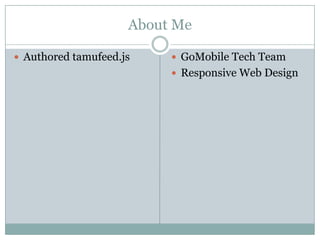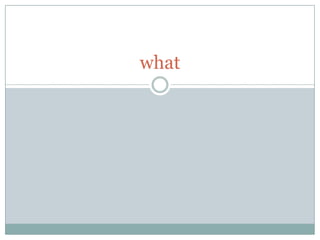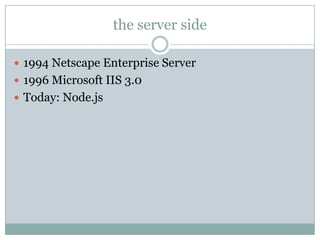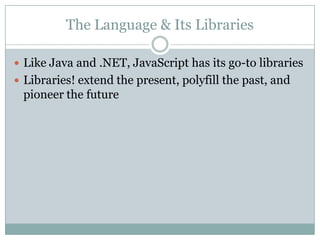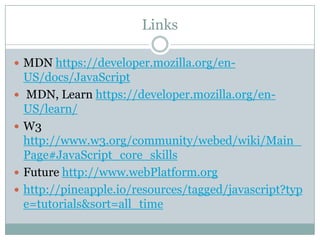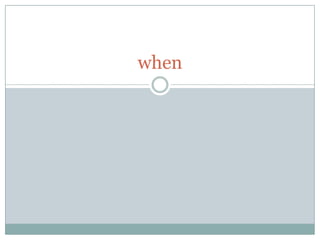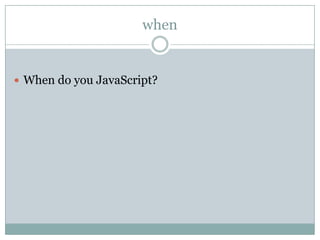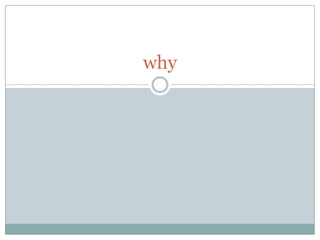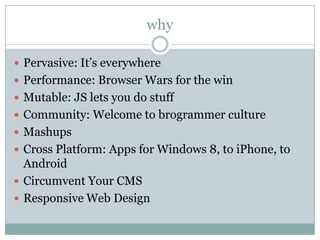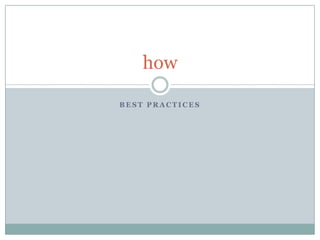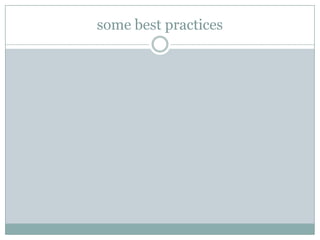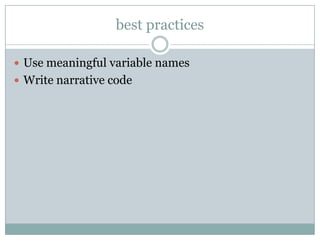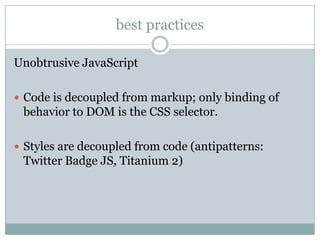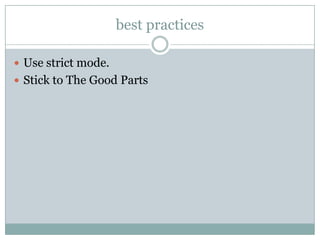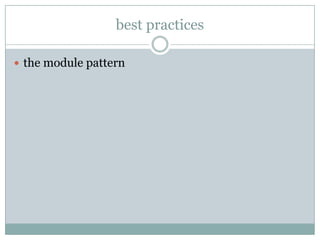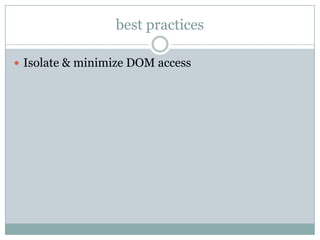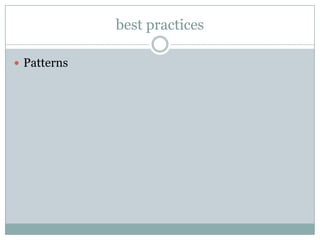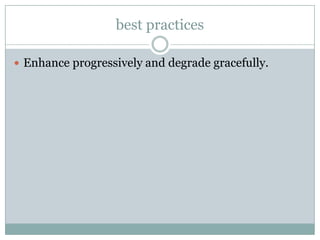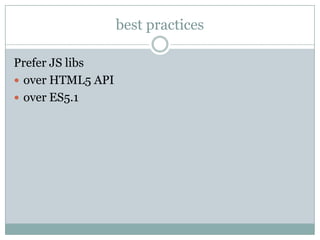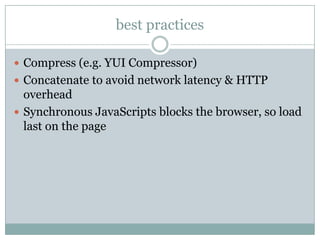JavaScript: the who, what, when, where, why, & how
- 1. JavaScript WHO, WHAT, WHEN, WHERE, WHY
- 2. About Me ? Authored tamufeed.js ? GoMobile Tech Team ? Responsive Web Design
- 3. what
- 4. what JavaScript is a lightweight, interpreted, object- oriented language with first-class functions.
- 5. the server side ? 1994 Netscape Enterprise Server ? 1996 Microsoft IIS 3.0 ? Today: Node.js
- 6. the client side Adobe Flash, Google Chrome, Nexus 7, Firefox, Opera, Safari, iPad, Kindle PaperWhite, Windows 8, Internet Explorer 9, Windows Phone
- 7. The Language & Its Libraries ? Like Java and .NET, JavaScript has its go-to libraries ? Libraries! extend the present, polyfill the past, and pioneer the future
- 8. Links ? MDN https://developer.mozilla.org/en- US/docs/JavaScript ? MDN, Learn https://developer.mozilla.org/en- US/learn/ ? W3 http://www.w3.org/community/webed/wiki/Main_ Page#JavaScript_core_skills ? Future http://www.webPlatform.org ? http://pineapple.io/resources/tagged/javascript?typ e=tutorials&sort=all_time
- 9. what itˇŻs not ? vbscript ? python ? CoffeeScript ? Google Dart ? Microsoft TypeScript
- 10. when
- 11. when ? 1995 Netscape 2.0 ? 1996 IE 3.0 ? 1997 Ecma-262 ? 1999 Ecma-262 Ed.3 ? 2009 Ecma-262 Ed.5 ? 2011 Ecma-262 Ed.5.1
- 12. when ? When do you JavaScript?
- 13. where
- 14. where ? HTML5 Texas http://html5tx.com ? @jsconf http://jsconf.com ? http://texasJavaScript.com ? http://austinJavaScript.com Follow the individuals
- 15. WhoˇŻs Who? ? Douglas Crockford Y! http://www.crockford.com ? Brendan Eich N. @BrendanEich http://BrendanEich.com ? John Resig jQ @jeresig http://ejohn.org ? Nicholas Zakas Y! @slicknet http://www.nczonline.net ? Stoyan Stefanov Y! @stoyanstefanov http://www.phpied.com ? Rebecca Murphy B! @rmurphey http://rMurphey.com ? Addy Osmani G. @addyosmani http://addyosmani.com
- 16. why
- 17. why ? Pervasive: ItˇŻs everywhere ? Performance: Browser Wars for the win ? Mutable: JS lets you do stuff ? Community: Welcome to brogrammer culture ? Mashups ? Cross Platform: Apps for Windows 8, to iPhone, to Android ? Circumvent Your CMS ? Responsive Web Design
- 20. best practices ? Use meaningful variable names ? Write narrative code
- 21. best practices ? Use object literals ? And JSON notation ? whenever possible
- 22. best practices ? DonˇŻt pollute the global namespace.
- 23. best practices Unobtrusive JavaScript ? Code is decoupled from markup; only binding of behavior to DOM is the CSS selector. ? Styles are decoupled from code (antipatterns: Twitter Badge JS, Titanium 2)
- 24. best practices ? Use strict mode. ? Stick to The Good Parts
- 25. best practices ? the module pattern
- 26. best practices ? Isolate & minimize DOM access
- 28. best practices ? Enhance progressively and degrade gracefully.
- 29. best practices Prefer JS libs ? over HTML5 API ? over ES5.1
- 30. best practices ? Compress (e.g. YUI Compressor) ? Concatenate to avoid network latency & HTTP overhead ? Synchronous JavaScripts blocks the browser, so load last on the page
- 31. best practices ? Know your JS engines when testing.

